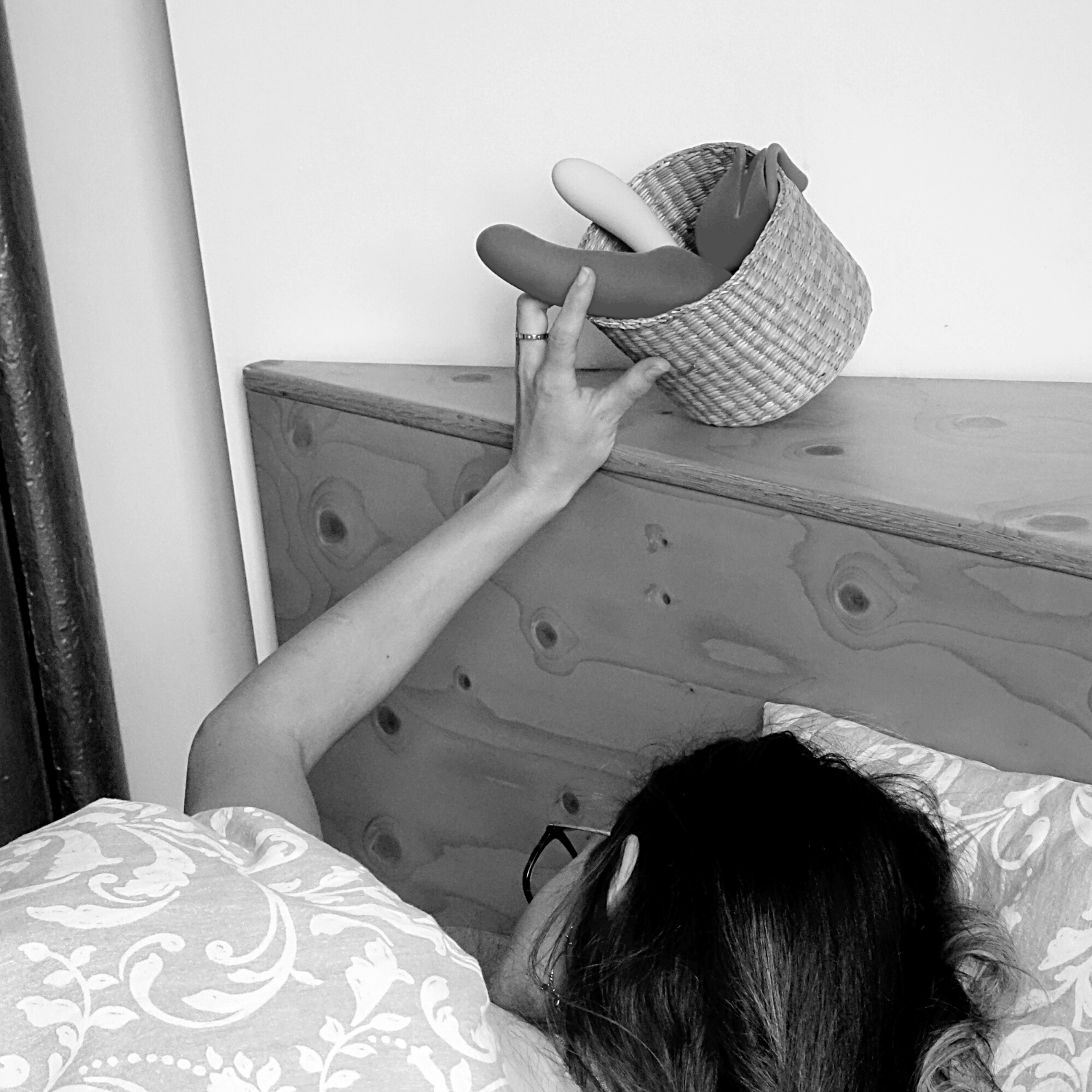Why Self Pleasure Could Be Part of Your Chronic Pain Management Toolkit
If you suffer from chronic pain, body positivity is not just a question of loving and respecting the way your body looks. It’s also a challenge to manage any negative feelings you may have around the function of your body, any pain your body physically causes you, and somehow feeling positive or neutral toward it. It’s not an easy practice! And mainstream body positivity does not do much to help, as it’s almost always focused on accepting the way your body looks, not creating a world in which the way any body functions is accommodated for, loved and desired.
If you struggle to feel positively about your body because it keeps you in pain or discomfort, one surprising tool that can help you on the road toward body respect and positivity? Masturbation!
That’s right–solo pleasure is a great tool to keep in your tool kit if you suffer from chronic pain.
Not only can the practice of solo pleasure help manage some pain (more on that below) but it can also start to help you associate pleasure and feeling good with engaging with your body. It helps provide pleasurable function and escape in a body that typically causes you pain and discomfort.
How can masturbation help to manage chronic pain?
Masturbation can be both a “quick release” type of pain treatment and, if practiced regularly, can actually help to reduce chronic illness symptoms overall. Solo pleasure is not a replacement for any sort of treatment or care management plan you already have, but having an enjoyable way to quickly relieve pain can not only improve your quality of life, but help add a little fun where you didn’t expect it!
(Masturbation can also help improve sleep! And sleep quality is a huge factor in when flare ups happen and how severe symptoms can be!)
Why does masturbation help with pain in the first place?
In this interview, Angie Ebba at O.School spoke with Dr. Barry Komisaruk and Dr. Beverly Whipple. Dr Komisaruk is a neuroscientist, author, and researcher, and he and Dr. Whipple both are leading experts in the field of orgasm and pain management (because yes, that is something you can study!).
Dr.’s Komisaruk and Whipple studied how vaginal stimulation could impact pain thresholds, and concluded that “vaginal stimulation and orgasm produces analgesia, specific pain blockage.”
This means that orgasm naturally provides pain relief! In fact, Dr. Komisaruk went on to say that people have already been using orgasm as a way to manage the pain of menstrual cramps, arthritis, and headaches.
(If you’re curious, seeing as the researchers specified vaginal stimulation, no it’s not necessary to have a vagina in order to feel the pain relief effects of orgasm. However, vaginal stimulation at the G-spot “causes a 50 percent increase in pain threshold.”)
The surprising fact was that pleasure was just as important a factor in the pain relief, as how the orgasm was stimulated.
Dr. Whipple said, ““We found a much greater significance in elevation in pain thresholds when [participants] found the stimulation and the orgasm pleasurable.” That’s why cultivating a relationship with your body in which you can seek pleasure from it is important.
But finding anything you’re experiencing within your body pleasurable might feel completely foreign when you’re constantly in pain and discomfort.
Dr. Whipple’s advice here was a bit of pressure relief: when you get started on this practice, make the goal feeling good, not orgasming. Just like in partnered sex, putting too much pressure on yourself in solo sex can also prevent you from being fully present or feeling pleasure.
Taking time to slow down and engage with your body in a low pressure setting is a great way to lay the foundation of a new, more positive relationship with your body.
The focus doesn’t have to be sexual–you can get started through other sorts of sensual touching. Grab some lotion and give your hands or neck a massage. Think about where your body is in the most pain or discomfort, is there a way you can touch or massage it to ease some of that pain?
Make it a full body experience, focused on doing whatever you can to feel good in that moment. That way sensual touch can start to be associated with you feeling good in your body. And that can help lead you to a more pleasurable masturbation experience–which can only increase the positive impact it can have on your pain relief!
What works for you can depend on the type of pain you have–remember not all methods of self pleasure may feel good!
If you have chronic pain in your hand, for example, you may want to find ways of exploring self pleasure that doesn’t add to your fatigue or increase your pain or cause a flare up. A good resource to get started exploring is Girly Juice, a sex blogger who focuses on the intersection of chronic illness, sex and relationships. Taking time to play around and find what works for you can be frustrating at first, but can help you find a practice that makes you feel good. Masturbation can be a powerful tool for chronic pain management, because it not only physically helps you to manage your symptoms, but it also reminds you that your body–when cared for intentionally–can have the power to make you feel good.
BLOG AUTHORS ALL HOLD POSITIONS AT THE GENDER & SEXUALITY THERAPY CENTER (G&STC). FOR MORE INFORMATION ABOUT OUR THERAPISTS AND SERVICES PLEASE CONTACT US.
